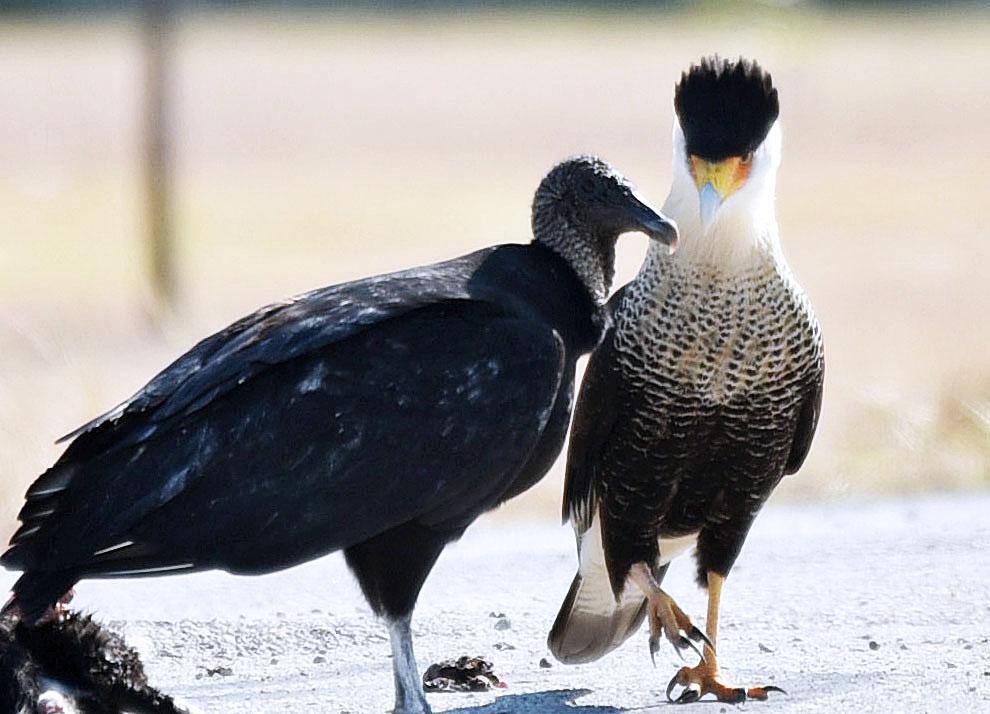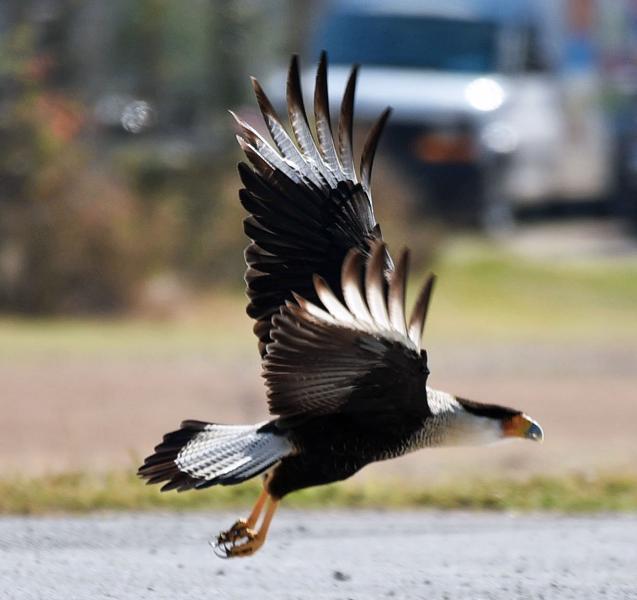
Photos by Gerald Castillo
An I-35 showdown between caracaras and vultures
I had heard there were numerous sighting of caracaras east of I-35, so one day a few years ago I took a day drive in search of this bird. It was not long before I hit pay dirt – road kill. I came across a flock of vultures and three Northern Crested Caracaras on Posey Road. At the time all I knew was that the bird was called a Mexican Eagle. To my surprise there was more to know about this bird.

The Northern Crested Caracara resides in Cuba, South America, Northern Peru, Norther Amazonian Brazil, and most of Central America and Mexico. Reaching the southernmost parts of the United States including Florida, it has a wing span of 46-52 inches and weighs two to three pounds.
Pronounced cara cara, the scientific name Caracara cheriway is the national bird of Mexico, although a golden eagle actually appears on the flag of Mexico.
A common subject of folklore and legends throughout Central and South America, the crested caracara is sometimes called the Mexican eagle. Although it looks like a long-legged hawk, the crested caracara is actually a falcon. It is the only falcon that collects material to build a nest.
The caracara is quite capable of killing living prey and with its powerful legs, the bird has been known to run down its prey or even wade in shallow water. It also feeds on rabbits, marmots, squirrels and hares, but has also been known to snatch foxes, livestock and even adult deer and caribou.

Birds of prey or raptors have keen eyesight for detecting food at a distance during flight, strong feet equipped with talons for grasping or killing prey, and powerful beaks.
It mainly feeds on carcasses of dead animals but will steal food from other raptors, like vultures, and raid bird nests to take live prey. It will also eat fruit. They have been known to gather at a large food source like a dump.
Breeding takes place in spring and summer. The nest is a large open structure typically placed on the top of trees and palms, not on the ground. Average clutch size is two eggs.











